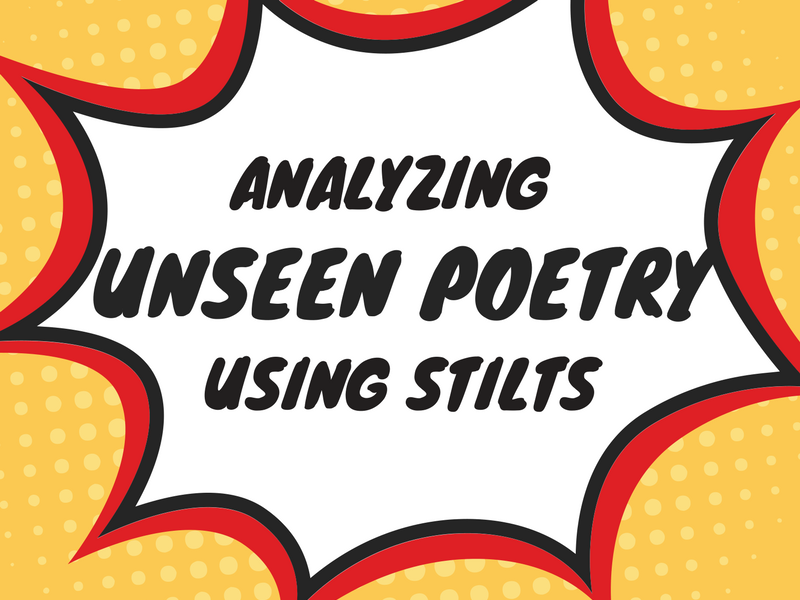How to Analyse an Unseen Poem

It can be quite overwhelming when faced with an unseen poem in an exam. However, if you remember STILTS, you won’t feel wobbly analysing a poem again!
Once you have read the poem (at least) twice look out for what is listed below:
Structure:
Firstly, identify how many stanzas and lines there are in the poem – does it have a specific and identifiable form? How does this affect the poem or the way you read it?
Next, work out the rhythm. Count how many syllables there are in each line and note down if they are stressed or unstressed.
To decipher the rhyme pattern, look at the last word of each line and check if it rhymes with the final word in the next line one or with the final word in the previous line.
Is there a lot of punctuation within the poem? If not, then it could be written in free verse. If the last line of a stanza leads onto the first line of the next, this is enjambment.
You can apply your knowledge of other poetic devices to your answer, such as; assonance, rhyming couplets, para-rhymes and internal rhyme. However, to achieve the top marks you must state why the device is significant.
Tone:
When reading the text ask yourself what the poet is feeling, how do they convey this and how you know. It is also important to reference if the tone changes throughout. A top tip is to bring a highlighter or coloured pen to the exam, so you can highlight any emotive words in the poem. Once you have done this, write down the feelings you attribute to those words, and you’ll soon understand the general subject matter.
Imagery:
What do you think about when reading the poem? Don’t just consider visual imagery but also think about scents and tastes that may be described. Is there a description of noise that reminds you of a different sound? Or unusual movement from figures and animals?
Also look out for metaphors, similes and personification that alter the way of reading the text.
Language:
If you are unsure when the poem was written, you may get a rough idea if there are archaic words or colloquial expressions included: this also could give you a hint about the speaker!
Some poets use persuasive language when they are writing about a passionate subject. This can include rhetorical questions, which I have used a fair bit in this article!
Alliteration and sibilance can speed up the flow of a line, whereas plosive words can slow it down. Consider why the poet has done this, perhaps a line has been slowed down to draw more attention to it.
Onomatopoeic words can reinforce the aural imagery.
A poet’s language often reveals the tone of the poem, are they using angry, sad or loving words?
Title:
Sometimes the title of a poem can give the reader an idea of the subject matter or setting.
If the two seem irreconcilable discuss why that is.
Speaker:
From the poem do you learn anything about the speaker?
Does the speaker address the reader or is anyone else described in the poem listening? This could also give you an idea of the setting.
Always ask yourself why has the poet done what they’ve done and what affect has it achieved? Lastly, always remember PEE: Point, Evidence, Explain!
Good luck!
Amelia is an English tutor with Newman Tuition. To book a lesson with her, or one of our other excellent tutors, please call us on 020 3198 8006, email us at he***@**************co.uk, or complete the form on the ‘Contact Us’ page.